Bikes at the 2004 Paris-Roubaix: Part I
As Cyclingnews diarist Scott Sunderland said about Paris Roubaix, "It's one of the few races of the...
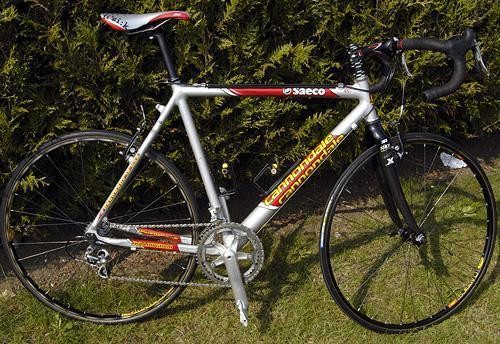
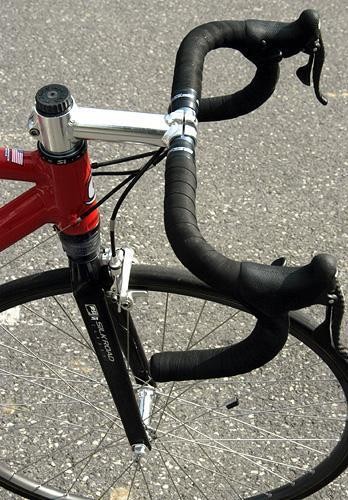
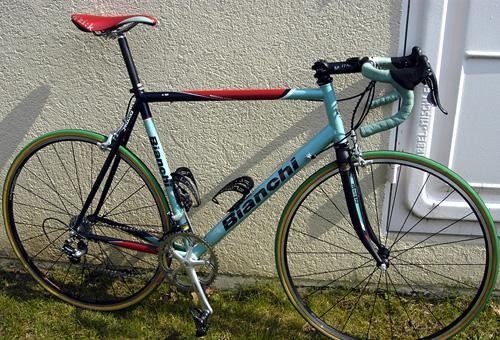
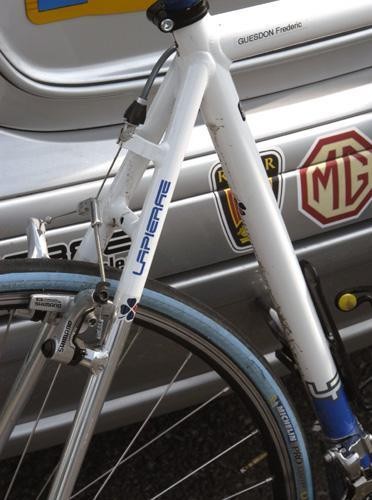
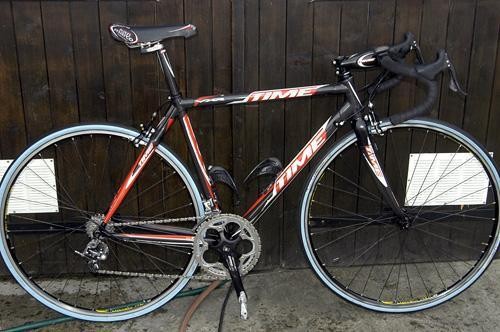
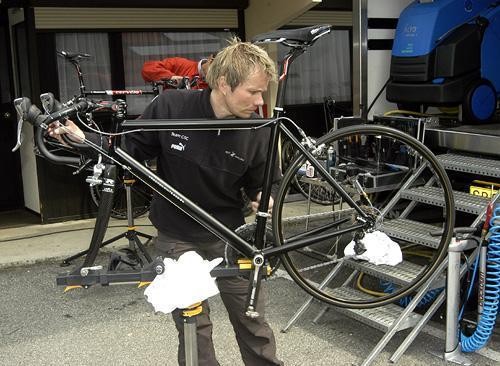
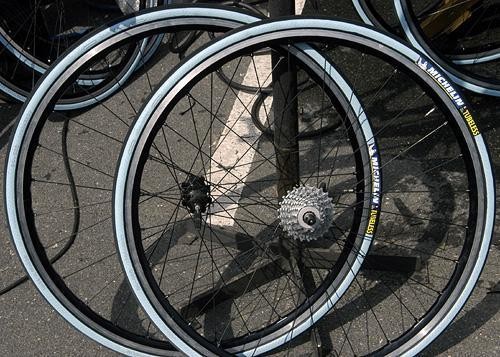
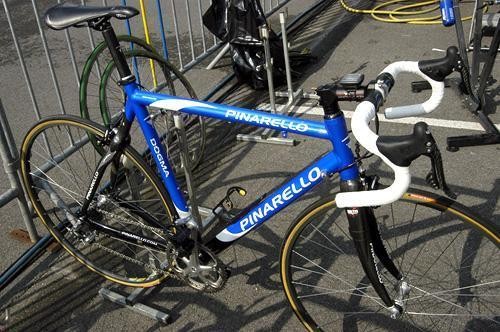
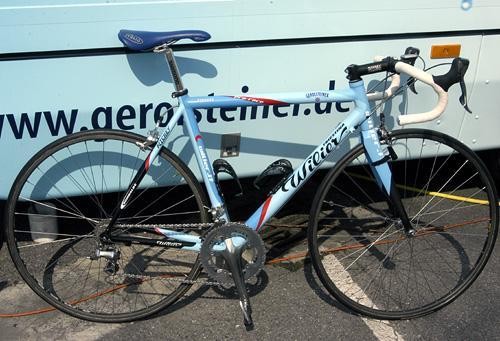
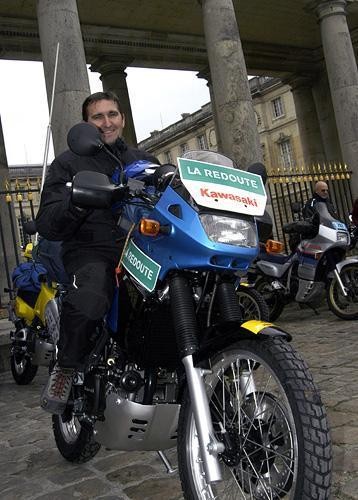

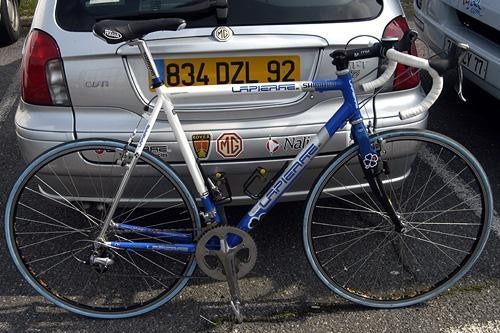


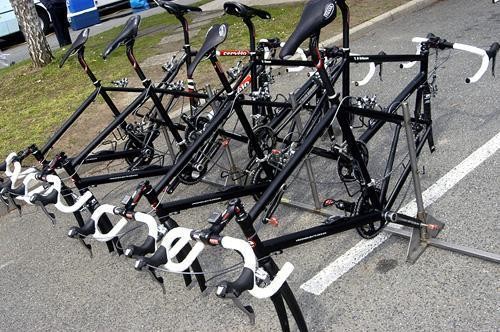


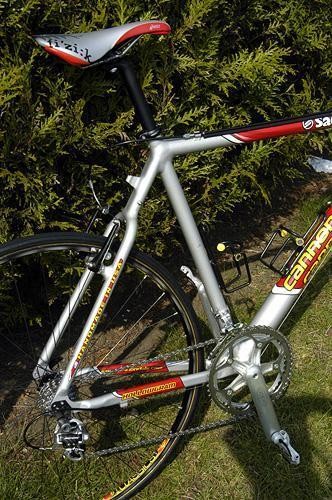



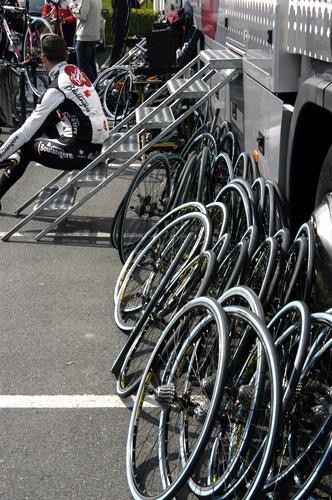

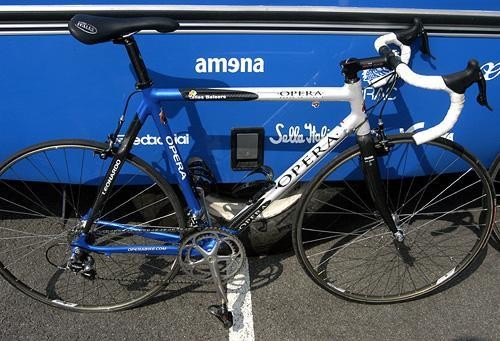
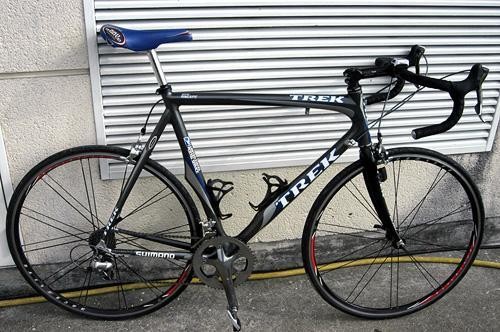

Tech feature - April 11, 2004
As Cyclingnews diarist Scott Sunderland said about Paris Roubaix, "It's one of the few races of the year where riders often use slightly different equipment, because of the unique characteristics of the race." In part one of this special Cyclingnews technical feature, we take a look at the lengths some riders have gone to before they tackle the "Hell of the North".
Tuscans love titanium: Andrea Tafi's Alessio Bianchi
The winner of an epic Paris-Roubaix five years ago, Andrea Tafi's Alessio Bianchi is made from 3AL-2.5V titanium, complemented by a carbon/aluminium front fork.
As Cyclingnews diarist Scott Sunderland noted in his pre-Roubaix diary, the aluminium steerer provides a little extra strength when these boys are pounding their way over a total of 51.1 kilometres of pavé. The fork also has a little more rake for better handling and less jarring, and the rear chainstays are also a tad longer for much the same reason. Also, the forks are wider in the top to allow for bigger tyres; Alessio will be rolling on 24mm Vittoria CG tubulars, so they'll need a bit more clearance.
Scott also mentions the chainstays on these special-issue bikes are wider to provide more clearance in the event of a puncture, broken spoke or a buckled wheel, plus the bike is less prone to being clogged should the weather turn foul and leave the roads to Roubaix muddy as well. We certainly hope so!
Guess who's coming to Roubaix? Frederic Guesdon's FdJeux.com Lapierre
Get The Leadout Newsletter
The latest race content, interviews, features, reviews and expert buying guides, direct to your inbox!
With team-mate Baden Cooke out due to injury and Cofidis pulling their entire squad out of Roubaix at the eleventh hour, France's hopes rest with 1997 winner Frederic Guesdon.
In Paris-Roubaix terms, Guesdon is in his prime at 34 years old. Coming from a cyclo-cross background, the Frenchman has intelligently opted for cantilever brakes for clearance in the mud, and a stronger, fatter front fork.
The fabulous baker bikes: Brioches La Boulangère's Time VX R
The fabulous baker boys from Brioches La Boulangère are using ostensibly the same bike they use for all their races, except Time's Avant Stiff Plus carbon fork has been replaced by a carbon fork with an aluminium steerer, similar to Alessio's Bianchis.
We reviewed Quick.Step-Davitamon rider Jose Antonio Pecharroman's VX R a few weeks back, and noted the most significant change from its predecessor, the VX Special Pro, was the use of carbon lugs throughout excluding the bottom bracket, which allows for custom frame geometry.
Like virtually every single bike we've seen this weekend, riders are opting for close ratio front chainwheels to tackle what is a relatively flat parcours, the most common being 52 or 53 teeth on the outside and a 44-48 tooth chainring on the inside. Other significant modifications are sturdy Mavic clinchers and Michelin's tubeless Pro Race tyres, in what will be their first-ever outing at Roubaix.
Weapon of mass destruction: Team CSC's Cervélo R1
First sighted at last weekend's Tour of Flanders and ridden by Lars Michaelsen, Tristan Hoffman and Thomas Eriksen, Team CSC's Cervélo R1 is in fact an all-aluminium prototype, that when finalised, will sit below their flagship carbon model, the R2.5, made famous by Tyler Hamilton at last year's Tour de France.
Cervélo's chief designer Gerard Vroomen revealed to Cyclingnews that the R1 is "built along the same design parameters as the R2.5. So it is optimized for stiffness-to-weight ratio," he said. And if it weren't for their white handlebar tape, these bikes would most surely be undetectable by radar; could these be Saddam Hussein's next weapons of mass destruction?
Dirt bikes: Dario Pieri and Gabriele Balducci's Team Saeco Cannondale Cyclocross
Runner-up at last year's Roubaix, Team Saeco's Dario Pieri and team-mate Gabriele Balducci have decided to get cross, opting for Cannondales' Si (System Integration) cyclocross frame accompanied by the company's patented HeadShok full suspension front fork, which features a lock-out mechanism at the top of the stem cap. Pieri also appears to have increased his stack height by inserting a few extra spacers underneath his stem, preferring a more comfortable riding position.
"The time he'll make up on the cobbles is more than offset by anything that he might lose by using a cyclocross frame," Scott Sunderland said about Roger Hammond's decision to go with a 'cross frame. "The difference between a cyclocross and a normal frame is marginal; the fresher you come off the cobbles, the faster you'll be on the smooth road."
Other riders on Team Saeco are using standard frames with the HeadShok front fork; only Salvatore Commesso is choosing to ride a totally normal frame.
Going top... , er, tubeless: Michelin Pro Grip Special Paves tubeless
The days of the inner tube are numbered: in what will be their first outing at Roubaix, Michelin will be showcasing their new range of tubeless clinchers - a technology the company has been applying to cars since 1955!
Developed in partnership with ubiquitous wheel builder Mavic, the concept is based on two components: first, a special rim designed to hold the tyre and bead in position to help ensure air-tightness at high pressure; and second, a Michelin tubeless tyre.
Initially targeting the professional peloton with availability to the public expected sometime in 2005, Michelin will introduce three new products that will be tested and refined over the course of this year: the Michelin Pro Race Tubeless, the Pro Grip Tubeless and the Pro Grip Special Paves Tubeless.
Specially-designed for cobblestones, the Michelin Pro Grip Special Paves Tubeless has a width of 24mm and uses a new tread design made up of diamond-shaped points on the central band to break the film of water or mud on cobblestones. The company also claims the lateral striped tread - previously tested on the rain tyres used by 2003 world motorbike champion Valentino Rossi - makes it possible to lean into the corners in the often inclement conditions characteristic of many of the races in northern Europe.
Sorry, no points for guessing the model to be used at Roubaix!
Go the doggies! Frank Vandenbroucke's Fassa Bortolo Pinarello Dogma
Speaking of weapons of mass destruction, Fassa Bortolo's weapon for Roubaix is none other than Frank Vandenbroucke, who this year has almost rediscovered his winning form and shed his bad-boy image.
Despite his light weight, VDB believes in his chances for Sunday: "It's said that with my 64 kilograms I'm a bit too light for the cobbles of Northern France, but Roger De Vlaeminck was also not the Ballerini type," said Vandenbroucke. "To win one time in the velodrome remains a dream for me... Like always, I'll try to win."
From the photo, it appears la squadra Fassa won't be making any drastic changes to their technical set-up, with Franky-boy still riding his Pinarello Dogma that uses Dedacciai's AK61 magnesium tubes, which the manufacturer claims has greater durability than 6061 aluminium due to its superior elongation characteristics.
VDB's Dogma also sports some very traditional-looking Mavic tubulars for puncture resistance, and an extra helping of bar tape to ease Frank's fingers over the unforgiving parcours as he vies to win his first-ever Roubaix.
Wilier good: Marcel Strauss's Gerolsteiner Wilier Triestina
Yesterday, we took a look at Fabian Wegmann's Gerolsteiner Wilier Triestina and the history of a company that began way back in 1906. While much has changed since founder Pietro Dal Molin's steel pipe concoction almost 100 years ago, differences between Wegmann's bubble-blue Wilier Triestina and Strauss's bike for Roubaix are minimal, other than some sturdier wheels and two layers of bar tape.
Moto Roubaix: ASO motorcycle driver Jérôme Berge's Kawasaki
And now for something a little different: ASO motorcycle driver Jérôme Berge told Cyclingnews that at the start of Paris-Roubaix, the motards (moto drivers) are happy and excited, but once the course is underway, they can't wait to finish as quickly as possible!
Just as it is for the cyclists, Paris-Roubaix is a special and unique race for those driving on the parcours and working in the race. For the motards, the number one concern is the safety of riders and spectators - and avoiding crashes. "You can be the best motard, but you might still crash," said Berge.
"You never know what's going to happen. There's a lot of stress and riding on the worst sections of the pavé... it's not simple." Berge drives a bike for ASO in all its major events, including the Tour de France, but he admitted freely that he can only handle one day of Paris-Roubaix per year.
Part II: We take a look at what some riders did to their bikes before they tackled the "Hell of the North", and found out whether it was worth it.